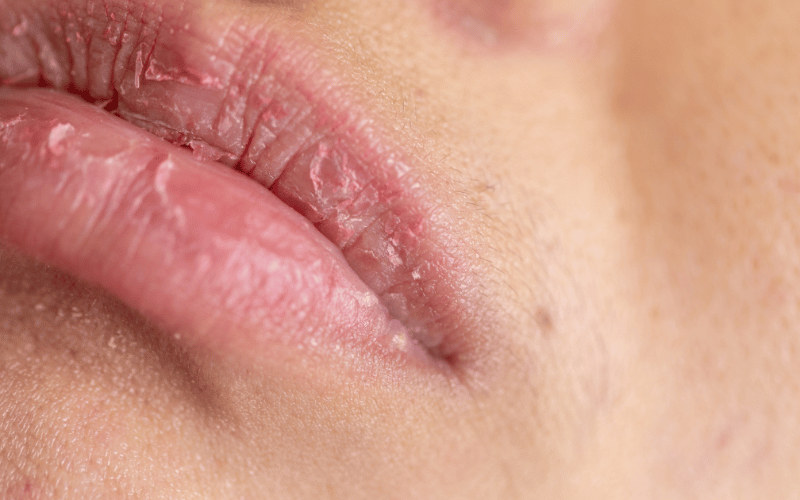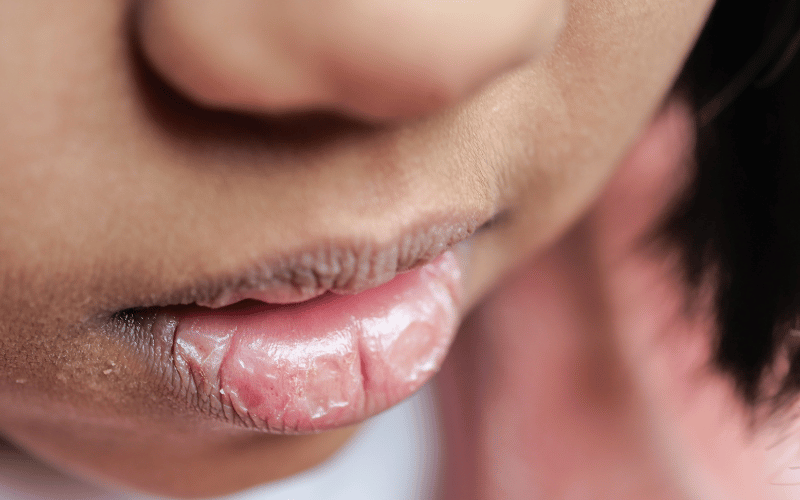Introduction: What is Actinic Cheilitis?
Actinic cheilitis, often referred to as “farmer’s lip” or “sailor’s lip,” might sound like a term reserved for the medical books, but its significance cannot be underestimated. Rooted in the sun’s all-powerful ultraviolet (UV) rays, actinic cheilitis is a condition that stems from prolonged exposure to these rays. As idyllic as those beach vacations or long hikes sound, the ramifications on the lips can be severe.

The lips, unlike other parts of our skin, are delicate. They don’t have the same protective layer of melanin, which acts as a shield against the UV rays. Consequently, they’re much more susceptible to damage. Every time we step out without adequate lip protection—be it in the form of a balm with SPF or shielding our face from the sun—we risk the onset of actinic cheilitis.
But what makes actinic cheilitis so crucial to understand? Well, it’s a precancerous condition. This means that while the initial symptoms might seem benign, like a persistent dryness, if left unchecked, they can develop into a full-fledged case of squamous cell carcinoma, a type of skin cancer. The silver lining here is that, like many other conditions, early detection can make all the difference. Knowledge, in this case, is more than power—it’s prevention.
Recognizing actinic cheilitis begins with understanding its symptoms. There are several tell-tale signs, and in this article, we’re going to lay them out for you. From subtle changes in lip texture to more obvious physical manifestations, we’ll guide you through what you need to keep an eye out for.
Symptom 1: Persistent Lip Dryness

Everyone’s experienced the nuisance of chapped lips now and then, especially in cold, dry weather. But what differentiates standard dryness from a symptom of actinic cheilitis? For starters, the persistence. While balms or lotions usually soothe regular dry lips, those suffering from actinic cheilitis find little to no relief. They’re stuck in a frustrating loop, constantly reaching for that lip moisturizer, only to be met with fleeting comfort.
Now, imagine a day where your lips felt like a parched desert. No matter how much water you drink or how frequently you apply lip balm, the relief is temporary at best. That’s the world of someone with actinic cheilitis. The continuous dryness isn’t just a mere annoyance; it’s a signal that the cells in the lip might be undergoing changes on a microscopic level.
But why does this matter? Isn’t it just dry skin? Well, the thing with actinic cheilitis is that it’s an early warning. Think of it as the body’s way of raising a red flag, signaling something’s amiss. And while this dryness might be the body’s initial SOS call, dismissing it or treating it as just another skincare concern might lead to more significant troubles down the road.
There’s another thing worth noting. The lips are exposed to all sorts of elements – food, beverages, the wind, and, most importantly, the sun. This exposure, combined with their lack of melanin, leaves them vulnerable. So, when this incessant dryness hits, it’s a sign that the lips are struggling, bearing the brunt of all these external factors. (1)